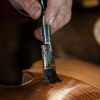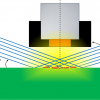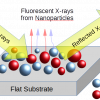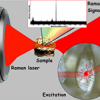Articles
Cultural heritage is a growing application area for spectroscopy, and our second article describes how infrared and X-ray spectroscopy are being used to explore the coatings used by the old Cremonese makers that produced such outstanding sound.
The ICH Harmonised Guideline for Elemental Impurities of drug products specifies limits on the residual amounts of 24 elements whose toxicities are of concern. The recommended analytical techniques to achieve this are ICP-MS and ICP-AES, but the regulations allow other methods if they exist. One such method is XRF spectrometry. The method is shown to meet the regulations and is a useful, cost-effective alternative to ICP-MS and ICP-AES.
Total reflection X-ray fluorescence (TXRF) is a “Cinderella” technique: not widely known but with great potential. The author and other members of the TXRF Workgroup are making strenuous efforts both to spread the word about TXRF and to improve communication within the TXRF community. As Ramón points out, atomic absorption or plasma spectroscopies may be the “go to” techniques for many, but TXRF is worthy of consideration.
Nanomaterials find widespread applications in many fields of science and nanotechnology, especially as catalysts in the chemical, bio-nanotechnology, nano-electronics and pharmaceutical industries. Understanding the physical and chemical properties of nanoscale materials is important, not only because of the fascinating nature of the subject, but also due to their potential applicability in almost every branch of science and technology. Nanostructured materials offer interesting properties, because at the atomic or molecular scale, the physical properties of a material become size dependent due to the quantum confinement and surface states effects.
This article looks at the use of Raman and XRF spectroscopies to investigate the different deterioration processes caused by marine aerosols. These techniques can detect the decay compounds and the original composition of the different materials from historical buildings close to the sea, which can then be used to explain the reactions that take place on them. This helps in the development of remedial actions and preventive conservation strategies for historical buildings.
Scientific studies of artworks are an important practice in many institutions dedicated to the study and protection of cultural heritage. Applied physics and chemistry provide the scientific data necessary to characterise and understand the origin, the degradation processes and the environment in which the artwork was created or has existed.
X-ray fluorescence spectrometry could be a good analytical tool for trace metal analysis of vegetation samples as an alternative to classical destructive methods, given that it provides accuracy and precision fulfilling the requirements for environmental studies.







